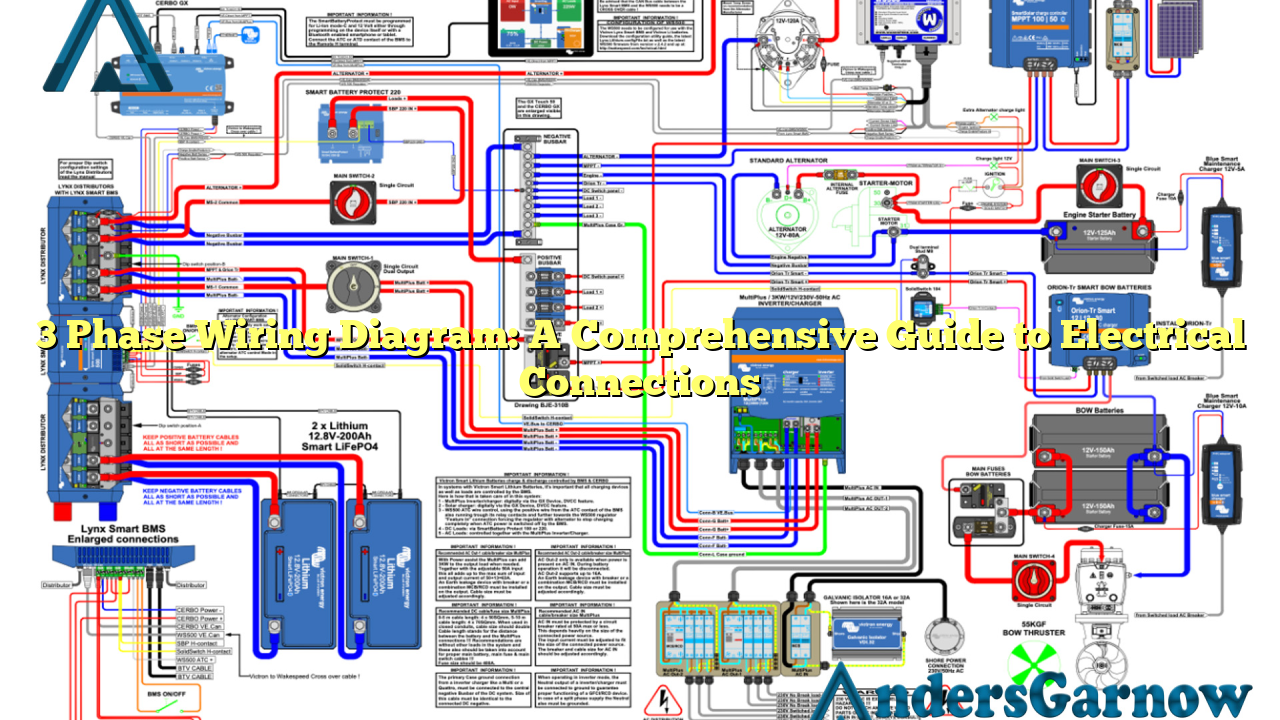Hello readers! In this article, we will delve into the world of 3 phase wiring diagrams, providing you with a detailed understanding of this electrical connection system. Whether you are an electrician, an engineer, or simply curious about the inner workings of electrical systems, this guide aims to equip you with the knowledge you need. Let’s dive in!
1. What is a 3 Phase Wiring Diagram?
A 3 phase wiring diagram is a visual representation of the electrical connections between a three-phase power source, such as a generator or utility supply, and various loads or equipment. It illustrates how the three phases, labeled as A, B, and C, are interconnected and distributed within the system.
One of the primary advantages of a 3 phase wiring diagram is its ability to deliver a balanced and efficient power supply. The three-phase system allows for higher power transmission while minimizing voltage drops, making it ideal for industrial and commercial applications.
Advantages of 3 Phase Wiring Diagram:
| Advantages | Explanation |
|---|---|
| Balanced Power | Each phase carries an equal share of the total power, resulting in a balanced load. |
| Higher Efficiency | The three-phase system delivers power more efficiently compared to single-phase systems. |
| Lower Voltage Drops | Due to the balanced power distribution, voltage drops are minimized, ensuring stable operation. |
| Cost Savings | Three-phase motors are smaller, lighter, and more cost-effective than their single-phase counterparts. |
2. Components of a 3 Phase Wiring Diagram
A 3 phase wiring diagram typically consists of the following components:
- Power Source: This can be a generator or a utility supply that generates the three-phase power.
- Circuit Breaker: It protects the system from overcurrent and short circuits.
- Main Busbars: These conductors distribute power to different loads.
- Loads: These can be motors, lighting fixtures, or any equipment that requires electrical power.
- Switches: They control the flow of power to the loads.
- Wiring Connections: These connect the various components, ensuring the proper flow of electricity.
3. How to Read a 3 Phase Wiring Diagram
Understanding how to read a 3 phase wiring diagram is crucial for electricians and technicians. Here are some key points to consider:
- Identify the power source and its corresponding connections.
- Trace the distribution of the three phases throughout the diagram.
- Follow the wiring connections from the source to the loads.
- Note any circuit breakers, switches, or other protective devices along the path.
- Pay attention to the labeling and symbols used in the diagram.
4. Alternatives to 3 Phase Wiring Diagram
While 3 phase wiring diagrams are widely used in industrial and commercial settings, there are alternative electrical connection systems available:
- Single Phase Wiring: This is the most common residential wiring system, utilizing a single phase power supply.
- Split Phase Wiring: It is a variation of single-phase wiring that incorporates a center-tapped transformer to create two 120V circuits.
- Two Phase Wiring: This system is rarely used nowadays and has been largely replaced by the more efficient three-phase system.
5. Frequently Asked Questions (FAQ)
Q: Can I convert a single-phase system to a three-phase system?
A: Converting a single-phase system to a three-phase system is a complex process and may not be feasible in all situations. It requires professional expertise and assessment of the existing electrical infrastructure.
Q: What are the voltage configurations in a three-phase system?
A: The most common voltage configurations are Delta (Δ) and Wye (Y). Delta configuration provides a higher voltage output, while Wye configuration offers a neutral connection.
Q: Can I connect single-phase loads to a three-phase system?
A: Yes, it is possible to connect single-phase loads to a three-phase system. However, it requires proper wiring connections or the use of phase converters to balance the load.
Conclusion
In conclusion, a 3 phase wiring diagram plays a vital role in understanding and implementing electrical connections in a three-phase system. Its advantages, such as balanced power, higher efficiency, and lower voltage drops, make it a popular choice in industrial and commercial settings. By familiarizing yourself with the components, reading techniques, and alternatives, you can confidently navigate the world of 3 phase wiring diagrams. Remember to consult professionals for specific installation requirements and ensure compliance with electrical codes and safety standards.

